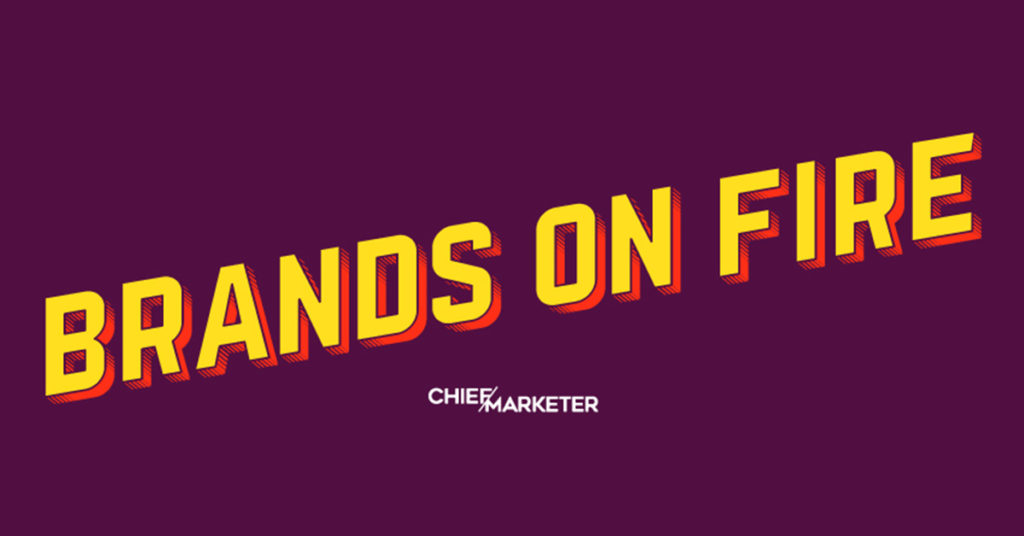Our monthly analysis of the world’s top brands and the marketing moves that are setting them apart.
—
When fans of your brand create a Facebook group in which exclusive versions of your product are resold for up to 15 times their original value, you know you’re doing something right.
We’re talking about Rothy’s, the direct-to-consumer shoe brand known for its stylish, comfortable flats made from recycled bottles of plastic. Launched in 2016 by entrepreneurs Roth Martin and Stephen Hawthornthwaite in response to the consumer need for sustainable products that are both comfortable and fashionable, Rothy’s offers an eco-friendly brand promise, a wide variety of colors and patterns (up to 400, now) and a consumer engagement strategy that’s helped build a cult-like following.
Like most DTC brands, Rothy’s uses paid social media, specifically Instagram and Facebook, to increase brand awareness. But according to vp of marketing Elie Donahue, word of mouth continues to be the brand’s biggest driver by far. As the name of one of its largest Facebook groups suggests (“Rothy’s Addicts”), the brand has inspired the creation of a close-knit community of women who are fiercely loyal. One indication of the product’s tendency to spread through word-of-mouth: the fact that the product’s densest markets are where women commute and congregate together, such as Washington, D.C. There’s even a “head bob” that women do when they spot a fellow Rothy’s wearer, as if to acknowledge being part of a secret club.
View this post on Instagram
Our current spring favorites. Which styles are in your wardrobe rotation? 💭
The brand’s Facebook groups, run by volunteers rather than brand reps, certainly help with brand awareness. Shoes are bought and sold there, and some groups, like “Finding Bigfoot,” are themed by foot size. Group members post pics of “Rothy’s wheels,” where the shoes are arranged in a colorful ring (see example below), show how they’ve customized theirs with paint and crystals, and discuss up-and-coming or exclusive releases. A marketer’s dream, right?
Almost. Given that the groups were created organically, the brand isn’t able to control the conversation as much it would like. The challenge becomes harnessing the undeniable benefits of word-of-mouth marketing while exhibiting some control over the conversation. Rothy’s solution was to create a new ambassador program called “The Collective,” a group of 19 super fans within Rothy’s biggest markets who are invited to provide feedback about the brand in exchange for perks like free shoes, exclusive Rothy’s events and meetings with executives. The idea is to create communities of passionate, empowered, influential women willing to spread the word about the brand and welcome new people to the circle.
Full-Funnel Content Approach
What’s the secret to surpassing one million customers in less than four years? The brand’s exceptional growth can be attributed in part to a three-pronged strategy of connecting to its audience authentically across the full sales funnel, according to Matt Gehring, vice president of growth at Rothy’s. First, it’s about creating a personalized marketing experience that pays attention to what channel people are using in order to build trust. For instance, the brand might engage with consumers at the top of the funnel during the brand awareness phase with a visually-striking introduction to its brand story through posts featuring images of plastic water bottles or shoes in a washing machine. Did we mention that you can toss them in the washing machine? Talk about appealing to a woman on the go.
Secondly, Rothy’s took advantage of non-branded search terms, like “recycled plastic bottles,” “sustainability” and “machine washable,” to find demand and then cross-reference that with regional data to target specific markets. And third, Gehring warns brands to continue to market to its most loyal customers. Identifying customers with high lifetime value has helped grow the channel by 350 percent in less than six months.
Brick-and-Mortar Strategy
Though Rothy’s owes much of its explosive growth to digital, the brand does not exclude old-school tactics from its marketing mix. Last March, for instance, it launched a national TV ad campaign describing its sustainability mission and placed ads in radio and out-of-home. It’s creating more events for women who prefer to engage with the products in person. And, importantly, the brand is embracing a brick-and-mortar retail strategy. It began with a small shop in San Francisco that offered 300 square feet of selling space and now has retail shops in Boston and Washington D.C.—with several more shops planned in additional markets.
The store has been wildly successful as an experiment designed by the brand to get closer to its customers, listen to feedback and test new products. Product drops happen every few weeks and result in lines out the door. Staffers collects emails of customers within the shop in order to re-target them online. Buyers can personalize their just-purchased merch with embroidery available in the store. It’s also a place for consumers to delve deeper into Rothy’s sustainability mission through engaging with an interactive display. Simply put, the store is a complement to the brand’s digital business and a testing grounds for product innovation and improvement. Best of all, the crowd tends to be first-time consumers: 65 percent of people visiting the San Francisco store are new to the brand, according to Rothy’s president and COO Kerry Cooper.
Sustainable Brand Promise
Women tend to get hooked through the appeal of four different brand characteristics, Donahue says: style, comfort, made from recycled material and the fact that they’re machine-washable. But the importance of its sustainable brand story can’t be overstated. They’re made from discarded plastic bottles that are then hot-washed, sterilized and melted down into small beads. They are then fused into filament fiber to make yarn used to create the shoes through a 3D-knitting process that eliminates excess fabric, creating less waste. Rothy’s sport a vegan, recyclable, carbon-free sole as well, which can be washed alongside the fabric portion.
The product’s packaging is sustainable, too. Made from recycled and renewable materials, the boxes are resealable and used without tape, sealed with the brand’s signature blue recycled ribbon and are packed tight enough to prevent “box in a box” shipping. Rothy’s also offsets the fossil fuels used for every mile that its shoes travel. The credits benefit the Amazon Rainforest in Brazil as well as the reduction of pollution and conversion of biofuels in the U.S. According to the brand’s website, Rothy’s offset 2,522 tons of carbon in 2018.
What’s more, Rothy’s owns and operates its own production workshop in Dongguan, China, which allows it to bring a style to market in just six weeks and craft small batches that sell out quickly. Photos of the 250,000 square feet of factory space feature prominently in the brand’s communications, allowing consumers to learn about the product’s origins and story of going “from bottle to shoe.” For instance, consumers can learn from its website that the factory’s approximately 450 workers have access to health and wellness benefits just like its San Francisco-based employees. In an era where consumers demand transparency and are more and more willing to spend money on sustainable products, Rothy’s has staked a claim by capitalizing on these trends.
Social Media Engagement
From a marketing perspective, the brand’s commitment to sustainability, variety of colorways, comfort and cult-like following are communicated exceptionally well through the brand’s communication on social media and its website. On Twitter, for instance, the brand leans heavily on the shoe’s visual appeal by using strong imagery with sustainable materials as well as photos of the shoes themselves. Brand managers use “bright images and short copy that pops,” allowing the visuals to help that word-of-mouth strategy along.
On Instagram, the brand’s Stories Highlights section is organized by a variety of categories, including sustainability, how to properly wash your Rothy’s, a holiday mixtape with Spotfiy, video of the physical stores and a user-generated social media campaign, #RothysInTheWild. For the latter, the brand asked a select group of fans to share the names of five friends and family members who’d post photos of themselves wearing the brand’s new Chelsea boot on the day it launched.
Clever copy, like “Started from a bottle, now we’re here,” and lighthearted, animated visuals make the brand discovery process enjoyable. In the end, all the elements working together seamlessly might explain Rothy’s success. Digital marketing complements the in-store experience, which then breathes new life into fan groups, user-generated content and the brand’s eco-friendly mission. Fifty million plastic waters bottles and counting? Color us impressed.





